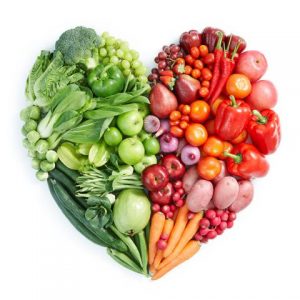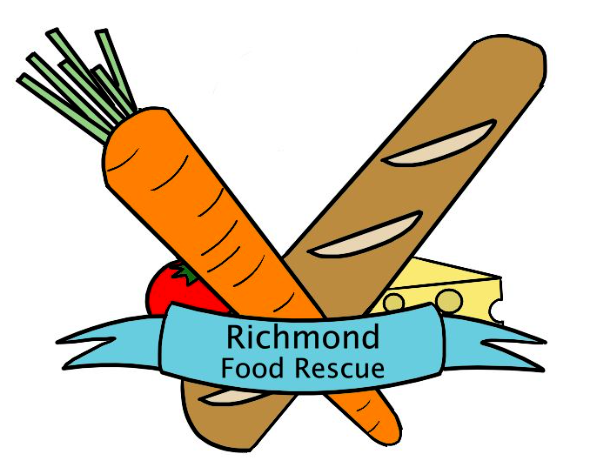
(Nordqvist, 2017)
Income, Class and Gender Issues Within Food Systems:
During our Session 4 lecture, we acknowledged that issues with low-income are tightly associated with local food insecurity, especially for people who are currently a single parent, have a low-income job, or are receivers of social welfare. These people will often look to charitable institutions such as food banks for assistance (Miewald and Ostry, 2014). How do we help these low-income people get closer to achieving food security? As stated in our project proposal, one of our primary objectives is to bring more perishable food donations from grocery stores to the Richmond Food Bank.
In our Session 8 lecture, we discussed how racial inequities are related to food insecurity. The Metro Vancouver area is considered to be quite racially diverse; it includes a variety of ethnicities from all around the world. However, white people are classified as privileged. This results in issues such as food insecurity to be unevenly distributed amongst the different race groups with the white population experiencing it the least amount (Myers & Painter, 2017). Our community partners do not keep data on the ethnicities of Food Bank users. However, they observed the majority of Food Bank users (an estimated amount of fifty percent) to be Chinese. The remaining clients tend to be Filipino, Russian, Middle Eastern, and Caucasian. This aligns with previous studies about more people of colour experiencing food insecurity compared to white people.
Not only does racial inequalities act as a main factor for food insecurity, unbalanced gender power is also a key element. Women perform the majority of food-related work but few of them hold the power to make decisions or take positions in food industry and food policy making. At the Richmond Food Bank, however, we surprisingly noticed that gender issues were not prevalent as four women in a group of ten people are in charge in their Board of Directory. In the survey we handed out, we are going to observe the number of managers in charge of handling perishable foods with respect to gender. A study also showed that women were more likely to be inadequately nourished as a result from prioritizing feeding their families first (Brady et al, 2017). Therefore, we are planning to investigate the number of male and female clients who accept food assistance from the Food Bank.
Weekly Objectives and Achievements:
Week of February 19 – 25
- Create a survey regarding perishable food waste
-the amount of perishable food waste produced in each day/week
-intensive labor that arises from processing perishable food waste. (finances allocated in transporting the food waste to designated composting areas, carbon dioxide gas emitted by the trucks, et cetera).
2. Decide which grocery stores we will distribute the survey to
Week of February 26 – March 4
- Get in contact with selected grocery stores (Walmart, Superstore, and Shoppers Drug Mart) and send them the survey
- Statistically analyze the amount of perishable food waste in Richmond grocery stores from the surveys we collected, and analyze the number of current grocery stores that are in association with the Richmond Food Bank. Estimate potential donor constitutions in the local area.
Week of March 4 – 10
- Compare the amount of perishable foods received by Richmond Food Bank with other Food Banks in British Columbia, for example the Kamloops Food Bank.
- Create the donor’s registration form and deliver it to potential donors which includes:
– the purpose, current conditions, and significance of the project.
– the liability and privacy issues that they might have concerns about.
3. Decide on a logo and a name for the perishable food recovery program.

A rough sketch of the logo for the food recovery program.
Survey and Responses:
1.How does your store deal with unsellable perishable food items (perishable food items that do not look “perfect”)?
Superstore: They donate to the Richmond Food Bank. The exact process was kept confidential by the manager, Pablo, whom one of our group member was on call with.
2. Do you keep track of the amount of unsellable perishable food items? If so, how much would you say is disposed of on average per week?
Superstore: According to Pablo, Richmond Food Bank have the numbers on the amount of food they donate.
3. Have you worked with/donated to the Richmond Food Bank before? If so, what items do you usually donate? And how often?
Superstore: They have people from the Food Bank who comes by the store every week to pick up donations from both the store and the customers. Non-perishable food donations from customers were found inside a box that Superstore had set up.
The store has a program for only donating meat. They do not donate produce because it is sensitive. If Superstore were to donate produce, the Richmond Food Bank will need to discuss with their head office to get something in place.
4. If you haven’t worked with the Richmond Food Bank before, are you interested in working with them in the future?
Superstore: They are presently working with the Richmond Food Bank.
5. What is preventing you from donating perishable food items to the Richmond Food Bank?
Superstore: The main reason why there is little to no perishable food item donations to the Richmond Food Bank is that there is a high demand for non-perishable food items (according to Pablo, they donate whatever the Food Bank asked for). As a result, the amount of non-perishable food items donated is extremely high compared to the amount of perishable food items.

(Lambertclare, 2016)
Moment of Significance:
What?
For many of us, this is our first big project of our university careers. Working with five other students with different backgrounds, skills and experiences can be a daunting task in itself, let alone immersing yourself in a community to accomplish the task at hand. Many of us are familiar with classes that are based heavily on independent study and memorization as opposed to collaborative work and engaging with the community and were unaware of the types of challenges we were about to face.
At first, we were nervous and anxious to meet each other but also excited and motivated to help create positive change within a community. Up until we met up with our community partners, there was a lot of uncertainty in regards to the specific objectives of our project with the Richmond Food Bank. Our community partners relieved some of the stress as they made it clear as to what they expected from us. After our meeting with the Food Bank, we felt confident about the tasks we needed to complete in order to successfully carry out this project.
So What?
However, with time, our excitement slowly diminished as midterms and assignment deadlines for other classes crept upon us. It became difficult to prioritize and set out time to work on the project as we are six ambitious students with varying schedules. Our communication went from being consistent to sporadic and only became more frequent as we approached assignment due dates and scrambled to get things completed on time. Another challenge included working around each individual group members’ writing skills and styles as they are not necessarily complementary to one another, which creates an extended editing process. As mentioned in class, coherence is when various sections of a paper correlate with one another; this can be a difficult task when six students are contributing and sharing their own ideas, opinions, and beliefs about a particular topic. This is important as assignments need to flow and be cohesive in order to effectively and professionally communicate our progress and accomplishments. Also, at times, we found it challenging to link lecture material to our project because connections between information covered in class and in the real world are not always explicit.
Now What?
The online modules regarding engaged scholarship provided by the University of Memphis provided insight about how we were going to overcome our challenges (Engaged Scholarship, 2018). We learned to implement the 4 steps to resolving conflicts as described in Module 3.
Firstly, we had to use our perception to put ourselves in each others’ shoes to understand one another’s feelings; then we took into consideration everyone’s interests with an open mind. We had to set aside our personal opinions and feelings in negotiations and encouraged each other to share their ideas with the group before deriving the final solution to the problem.
Collectively, we agreed that we need to communicate on a regular basis, well before assignment due dates in order to submit quality work and perhaps schedule times we are all available to talk and work together on assignments. In order to have all of our voices heard, we need to be open, listen to, and respect each other’s ideas and opinions instead of questioning them. For future group assignments, we need to clearly identify each group members responsibility and set deadlines for each procedure. Also, each group member needs to edit their portion of the assignment to the best of their ability before the final edit so that there is less time spent editing grammatical errors and more time for adding key linkages between coursework and our experiences. We will spend more time critically thinking about the connections between our community involvement and the information presented to us in class. With this in mind, we will be able to work more cooperatively and efficiently to achieve the objectives set out for the project.
Upcoming Objectives:
- If we fail to receive email responses, we may have to physically go to the grocery stores and have the managers fill in the survey.
- Have another conversation via email with Hajira to further discuss how effective will the increases in the donation of perishable food items (say we successfully increased donation of perishable food items in the category of fresh vegetables by 50%) be to the Richmond Food Bank (how many more families are benefited by the increase in donation in terms of the ability to receive a more nutritionally adequate diet).
- Once we have collected the responses from the grocery stores, we will gather and analyze all the data received in hoping to discover a trend in why certain perishable food items are low in donation or reason why some stores are reluctant to participate.
- Further discuss the contents in the brochure that is requested by Hajira to solidify our agenda so that we can produce a quality and informative brochure for the Richmond Food Bank to hand out during information sessions.
- Start drafting the contents of the brochure we are going to create. Send the draft copy to Hajira for questions or changes to be made after it is completed.
Conclusion:
The issues regarding income, class and gender are reflected in our community project at different levels. Low income families and individuals more commonly face food insecurity and are most likely to receive help from food banks. Therefore, our work is critical in that it provides more nutrient-rich foods, such as fruits and vegetables, to those who need them most and to promote food security.
After reflecting on our moment of significance, we hope to be able to work more effectively together to present a beneficial perishable food program for the Richmond Food Bank.
References:
Brady J., Power, E. Szabo, M. & Gingras, J. (2017). Still Hungry for a Feminist Food Studies. in Critical perspectives in food studies (Second ed.). Eds. Winson, A., Sumner, J., & Koç, M. Don Mills, Ontario: Oxford University Press. pp. 81-94.
(Image) Lambertclare, D. (2016, December 26). 5 Health Food to Look Forward to in 2017. Retrieved March 10, 2018, from https://tophatcatering.org/blogs/news/5-health-food-to-look-forward-to-in-2017
Miewald, C., & Ostry, A. (2014). A Warm Meal and a Bed: Intersections of Housing and Food Security in Vancouver’s Downtown Eastside. Housing Studies, 29(6), 709–729.
Myers, A. M., & Painter II, M. A. (2017). Food insecurity in the united states of america: An examination of race/ethnicity and nativity.Food Security, 9(6), 1419-1432. 10.1007/s12571-017-0733-8
(Image) Nordqvist, J. (2017, September 01). The health benefits of popular foods. Retrieved March 10, 2018, from https://www.medicalnewstoday.com/articles/269143.php
Shawki, N. (2012). The 2008 Food Crisis as a Critical Event for the Food Sovereignty and Food Justice Movements. International Journal of Sociology of Agriculture & Food, 19(3).
University of Memphis. (2018). Engaged Scholarship. Retrieved from: http://www.memphis.edu/ess/
